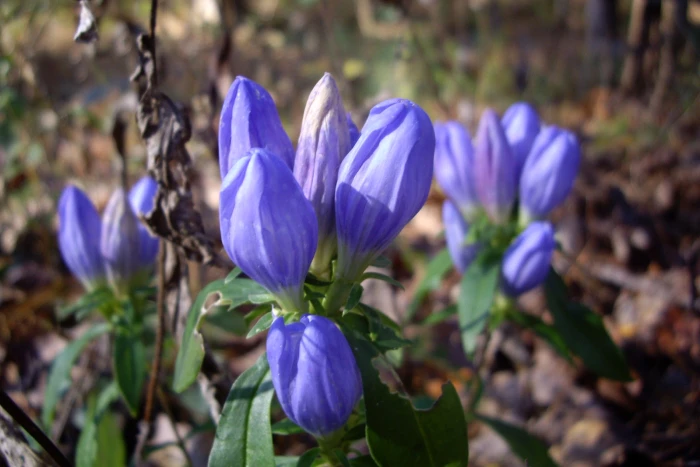Harvestbells
(Gentiana saponaria)
Harvestbells (Gentiana saponaria)
/
/

Chris Hartman from Boston, Massachusetts, United States
CC BY 2.0
Image By:
Chris Hartman from Boston, Massachusetts, United States
Recorded By:
Copyright:
CC BY 2.0
Copyright Notice:
Photo by: Chris Hartman from Boston, Massachusetts, United States | License Type: CC BY 2.0 | License URL: https://creativecommons.org/licenses/by/2.0 | Uploader: Nonenmac | Publisher: Wikimedia Commons | Title: Gentiana_saponaria_001.jpg | Notes: |























Estimated Native Range
Climate Requirements for League City, Texas
| This Plant | Your Site | Plant Suitability for Your Location | ||
|---|---|---|---|---|
| • Precipitation | 17" - 77" | 49" | Aquatic | Aquatic |
| • High Temp. | 60°F - 93°F | 91°F | Your summer temperatures are normal for this plant. | Excellent |
| • Low Temp. | -0°F - 40°F | 44°F | OK, but your winter temperatures are warmer than normal for this plant | OK |
This plant should grow well at your location with about N inches per year (Y minutes per month) of irrigation.
Summary
Gentiana saponaria, commonly known as Harvestbells, is a deciduous perennial herb native to moist meadows, open woodlands, and wetlands in the Southeastern United States. It typically grows 1–2 ft (30–61 cm) tall and features paired, lanceolate leaves on unbranched stalks. The plant is known for its striking blue or purple trumpet-shaped flowers that bloom in late summer to early fall and are pollinated by bumblebees. The flowers are quite showy and can add a splash of color to the garden during their flowering season. Harvestbells have a stout taproot system.
Harvestbells are valued for their vibrant blue or purple blooms, which make them an attractive addition to wildflower gardens, borders, and naturalized areas. They are also used in rain gardens due to their tolerance of moist conditions. In cultivation, Harvestbells prefer full sun to partial shade and require consistent moisture, thriving in soils with medium to high water availability and medium to fast drainage. While they are not commonly affected by diseases, they can be difficult to establish and may require patience as they adapt to new garden settings. Their preference for cooler temperatures means they may not perform well in very hot climates.CC BY-SA 4.0
Harvestbells are valued for their vibrant blue or purple blooms, which make them an attractive addition to wildflower gardens, borders, and naturalized areas. They are also used in rain gardens due to their tolerance of moist conditions. In cultivation, Harvestbells prefer full sun to partial shade and require consistent moisture, thriving in soils with medium to high water availability and medium to fast drainage. While they are not commonly affected by diseases, they can be difficult to establish and may require patience as they adapt to new garden settings. Their preference for cooler temperatures means they may not perform well in very hot climates.CC BY-SA 4.0
Plant Description
- Plant Type: Herb
- Height: 1-2 feet
- Width: 0.3-0.5 feet
- Growth Rate: Moderate
- Flower Color: Blue, Purple
- Flowering Season: Summer, Fall
- Leaf Retention: Deciduous
Growth Requirements
- Sun: Full Sun, Part Shade
- Water: Medium, High
- Drainage: Medium, Fast
Common Uses
Bee Garden, Bird Garden, Border Plant, Butterfly Garden, Deer Resistant, Hummingbird Garden, Low Maintenance, Rabbit Resistant, Showy Flowers, Water Garden
Natural Habitat
Moist meadows, open woodlands, and wetlands in the Southeastern United States
Other Names
Common Names: Soapwort Gentian, Moss Gentian
Scientific Names: Gentiana saponaria, Gentiana puberula, Gentiana gracilis, Gentiana latifolia, Pneumonanthe saponaria, Dasystephana cherokeensis, Dasystephana saponaria, Gentiana saponaria var. allegheniensis, Gentiana torreyana
GBIF Accepted Name: Gentiana saponaria L.